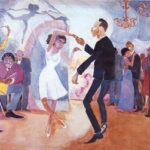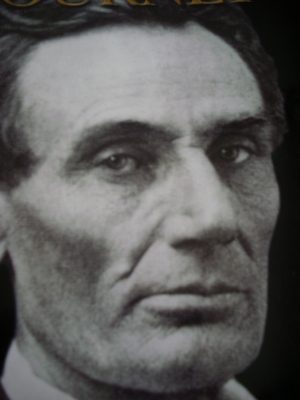The Hippy Counter-Culture is “a culture so radically disaffiliated from the mainstream assumptions of our society that it scarcely looks to many as a culture at all, but takes on the alarming appearance of a barbaric intrusion”, and starting in 1960’s that is exactly what it was.(Roszak, 42)
In a time where technology and machines were seen as a must for everyday life, the people of the counter-culture believed more on the level of tribes. Of people living just how they are.(Roszak, 54)
The young people of the counter-culture dreamed of the day of Black Power. The day when blacks and whites would be seen as equals, even though there would be some obstacles to overcome between the black and white youths.(Roszak, 44) Black Power would mean a totally new and improved world, a world where men would be considered as equals, and nothing less. A world where any man, no matter the race, can walk into a bank and get approved for a house loan. And this would have been the scariest part of the counter-culture for the older generations.(Farber, 168)
The non-intellectual powers of the mind, and even the world, were very important to the counter-culture.(Roszak, 51) They wanted to search for their own meanings, and experience as much as they could about living truly free. Science and technology meant nothing to the young people. And until psychoanalysis came about, no one understood how or why people could talk about the meanings of life instead of the science of it. At a time when the older culture believed that people should stay grounded and talk sense, the idea of consciousness was not accepted.
The non-intellectual aspects of the counter-culture came into play by the use of art, sexual freedom, poetry, and day-dreaming.(Roszak, 53) The world was seen as being a true, beautiful love. One’s soul was the seen as being most important. These thoughts definitely came into play with the help of the drug influences of marijuana, LSD, and amphetamines, which was also looked down upon and also feared by the older culture. Each individual in the counter-culture took full responsibility for their own actions, their own motives, and understood their full being. And they would have seminars that examined motivations and the soul. (Roszak, 62)
The thought of academic freedom was very important as well, because the counter-culture did not want to learn about science and mathematics. And eventually, in the late 1960’s, the free universities started to change their teaching techniques. They started using such methods such as total theatre, classes such as exotic religion equipped with light shows, and psychedelics, which are hallucinogenic.(Roszak, 63)
The hippies of the counter-culture wanted support and respect from their parents. Support and respect from a generation who lived everyday in the mindset of politics, technology, and science. They wanted to be thought of as a new chance in a world of war and rage. They wanted to make life and the way of living better for all of society, for every generation.
As universities started to provide lectures on “anti-cultures” and “anti-families”, the hippies took it as disrespectful, and the student-teacher relationship suffered.(Roszak, 45) As the counter-culture wanted academic freedom, antiuniversities or free universities started to form. One of the courses taught at one of these antiuniversities was called, “From Comic Books to the Dance of Shiva: Spiritual Amnesia and the Physiology of Self-Estrangement.”(Roszak, 46) The courses taught as these types of universities were taught by the young people, usually in their twenties.
They wanted to build a good society, they believed in the human community.(Roszak, 54) They wanted a participative democracy, where there was not a leader to make laws for the people to follow without a say in the matter at hand. They formed their own little communities, where everyone helped everyone else, and rules were made to be broken.(Farber, 169) They set up free services at local parks, where people could come and get free food. They also set up crash pads.
The hippies of the counter-culture wanted to win little feats, and they protested as a group, at rebellions against war and racism. They would form together with banners and wearing pins with the words, “I am a human being: do not mutilate, spindle, or tear,” written on them.(Roszak, 49)
The counter-culture truly disliked science and technological values.(Roszak, 51) In the 1960’s, this was a shock to the older cultures, it really hit home. When the counter-culture rejected these specific areas in society, they did it with persistency and with passion.
The counter-culture wanted to achieve peace in politics and economics. They wanted to “Make Love Not War.”(Roszak, 74) And during their protests, this message was displayed on many of the banners that the young people of the counter-culture would carry. American society was plagued by the attempts to make a profit, which the counter-culture wanted to stop.(Farber, 170)
What makes the youthful disaffiliation of our time a cultural phenomenon, rather than merely a political movement, is the fact that it strikes beyond ideology to the level of consciousness, seeking to transform our deepest sense of the self, the other, the environment.”(Roszak, 49)
The hippy counter-culture has a lasting significance in American society. In the short decade of the 1960’s, they made a lasting impression on thousands of Americans because of their new ideas and their eccentric behaviors and beliefs. They protested wars and racism, which lead to antiwar efforts and the emergence of the races. They sacrificed a lot, including societal rejection and breaking the law, for the better of society and America as a whole.
Although, the participants in the hippy counter-culture were not the first to introduce drugs to America, they did so illegally without proper permission. By the mid-1960’s, approximately 3,000 Americans died every year. The cause being overdose. (Farber, 174)
Farber, David. The Age of Great Dreams, 1961-1969. Canada: HarperCollinsCanadaLtd, 1994.
Roszak, Theodore. The Making of a Counter Culture: Reflections of the Technocratic Society and Its Youthful Opposition. Doubleday & Company, Inc. 1969




